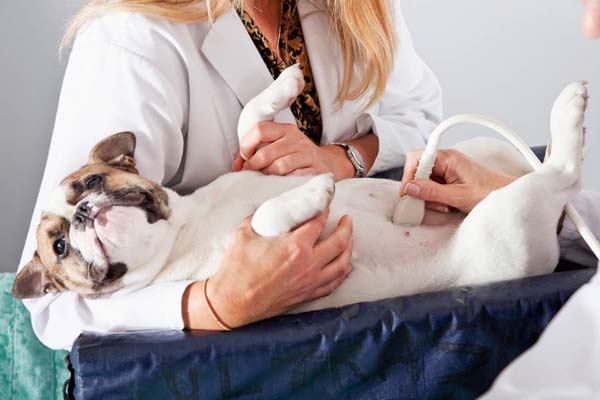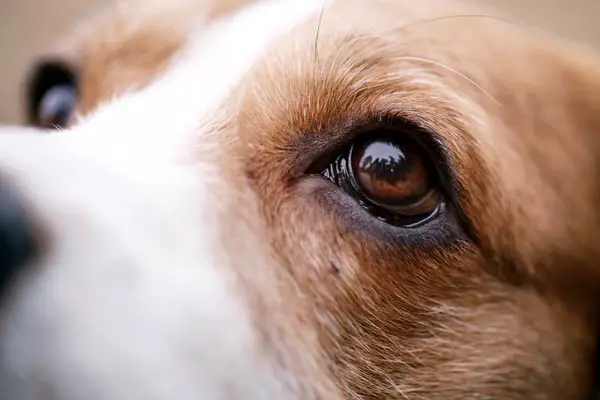How to Heal Dog Prolapse at Home? Easy and Effective Ways
Dog prolapse is a medical condition that can be concerning for pet owners. It occurs when the rectum protrudes from the anus, and various factors, including obesity, constipation, or diarrhea, can cause it. Talking to a vet is a good idea if your dog has a prolapse. But you can also try some things at home to help your buddy feel better.
It’s essential to fix your dog’s prolapse quickly. If you don’t, it could get worse, causing infections or even death. Luckily, you can do some things at home to help your dog get better. Just keep the area clean and dry, change what they eat, and make sure they rest a lot. This way, your dog can get back to everyday life.
Causes of Dog Prolapse
Dog prolapse can be caused by several factors, including:
- Obesity: Overweight dogs may experience increased pressure on their pelvic organs, potentially leading to prolapse.
- Straining during bowel movements: Repeated straining during bowel movements can weaken the muscles and tissues supporting the organs in the pelvis, causing prolapse.
- Giving birth: Going through pregnancy and delivering a child may weaken muscles and tissues that hold up the pelvic organs, causing prolapse.
- Pelvic muscle weakness: Weak pelvic muscles can cause prolapse.
- Constipation: Chronic constipation can lead to straining during bowel movements, which can cause prolapse.
- Urinary infections can cause straining during urination, leading to prolapse.
- Prostate disease: Prostate disease can cause difficulty in urination and defecation, leading to straining and prolapse.
- Swallowing sharp or rough things: Swallowing sharp or rough things can cause abrasions in the tissue, leading to prolapse.
- Bacterial Infection: Infections caused by bacteria might weaken the muscles and tissues that help hold up the pelvic organs, which can result in prolapse.
- Cancer: Cancer may lead to muscle and tissue weakness around the pelvic organs, which could result in prolapse. This occurs when the organs are not properly supported.
- Urinary tract stones: When dogs have stones in their urinary tract, it can make urination difficult and cause them to strain. This can result in prolapse.
Figuring out the root cause of prolapse is crucial to stop it from happening again. If you suspect your dog has a prolapse, it’s wise to consult a veterinarian. They can correctly identify and address the problem.
Symptoms and Signs of Prolapse in Dogs
Rectal prolapse in dogs is a medical condition where the rectal tissue protrudes through the anal opening. It can be distressing for pet owners, but it’s essential to recognize the prolapse symptoms in dogs to provide timely treatment.
Below are some typical symptoms and signs of prolapse in dogs:
- Straining to defecate
- A red, cylindrical mass protruding from the anus
- Licking or biting around the anus
- Pain or discomfort during bowel movements
- Blood or mucus in the stool
- Difficulty urinating
- Loss of appetite
- Lethargy or weakness
Remember that a few of these signs could indicate another health concern for your dog. If you encounter any of these symptoms in your dog, it’s smart to head to the vet for the appropriate care.
The prolapse may sometimes be partial, and the tissue may retract independently. However, if the prolapse is complete, the tissue may become dry and turn blue or black, indicating that the blood supply to the tissue is obstructed. This can cause severe pain and discomfort to the dog and may require immediate medical attention.
Seeking veterinary care promptly is essential if you notice your dog straining to defecate or see a red, cylindrical mass protruding from the anus.
Early diagnosis and treatment can assist in avoiding complications and guaranteeing a swift recovery for your beloved pet.
Home Remedies for Dog Prolapse
If your dog experiences a prolapse, you can try a few home remedies to ease its symptoms and encourage healing. Here are some suggestions:
- Gently washing the exposed tissue: Use a warm, damp cloth to gently clean the exposed tissue. Avoid using soap or other harsh chemicals, irritating the area and worsening the prolapse.
- Applying lubricants: Lubricants such as petroleum jelly or coconut oil can help reduce friction and discomfort when your dog passes stool. Apply a small amount to the prolapsed tissue before your dog defecates.
- Providing a balanced diet and hydration: A balanced diet high in fiber can help regulate your dog’s bowel movements and reduce the strain on its rectum. Ensure your dog has ample fresh water available since dehydration can worsen prolapse symptoms.
- Ensuring a clean and comfortable environment: Keep your dog’s living space clean and comfortable to reduce the risk of infection and promote healing. Use soft bedding and clean any soiled areas promptly.
Remember that although these home remedies may help, they cannot replace proper veterinary care. If your dog’s prolapse is intense or doesn’t show improvement with home treatment, it’s crucial to visit a veterinarian immediately.
Do’s and Don’ts for Managing Dog Prolapse at Home
When it comes to managing dog prolapse at home, there are certain things that pet owners should and should not do. Here are some do’s and don’ts for managing dog prolapse at home:
Do’s
- Maintain cleanliness and dryness in the impacted area. Doing so aids in avoiding infection and encourages the healing process.
- Monitor your dog’s behavior and comfort. Contact your veterinarian immediately if your dog seems to be in pain or discomfort.
- Follow your veterinarian’s advice. Your veterinarian may recommend specific treatments or medications to help manage your dog’s prolapse.
Don’ts
- Don’t attempt to push the prolapsed tissue back in without consulting a veterinarian. This can cause further damage and should only be done by a trained professional.
- Avoid using strong chemicals or irritants on the prolapsed area, which may lead to increased irritation and slow the healing process.
- Don’t ignore signs of discomfort or worsening symptoms. Contact your veterinarian immediately if your dog’s prolapse is worsening.
By following these do’s and don’ts, pet owners can better care for their dog’s prolapse at home and support the healing process. However, remember that each dog prolapse case is unique and might need additional treatments or actions. Talking to a vet before trying any home remedies or steps is crucial.
When to Seek Professional Help
Dog prolapse can often be managed at home with appropriate care and focus. Nonetheless, sometimes professional assistance is required. Here are some signs that it’s essential to consult a veterinarian:
- If your dog’s prolapse is severe or has been going on for an extended period, it’s time to see a vet.
- Should your dog be experiencing pain or discomfort, it’s crucial to visit a vet.
- If your dog has an infection or displays symptoms, it’s necessary to consult a vet.
- If your dog’s prolapse is not improving or worsening, it’s time to see a vet.
Possible complications, if left untreated, include:
- Infection: A prolapse can infect if left untreated, leading to more severe health problems.
- Pain and Discomfort: Prolapse can be painful and uncomfortable for your dog, reducing the quality of life.
- Rectal Stricture: Long-term prolapse can narrow the rectum, making it harder for your dog to defecate.
If you watch any of these signs, it’s really important to talk to a vet as soon as possible. They can figure out what’s causing the prolapse and give the right treatment.
Sometimes, surgery might be needed to fix the prolapse and stop more problems from happening.
Preventing Dog Prolapse
Keeping dog prolapse from happening is important for your furry buddy’s health and happiness. These tips can help you lower the chances of prolapse in dogs:
- Proper diet and hydration: Giving your dog the right food and enough water helps them have healthy bathroom habits. This can lower the chances of constipation or diarrhea, leading to prolapse.
- Regular exercise can help improve your dog’s overall health and keep them active, reducing the risk of prolapse.
- Avoiding excessive straining: Training your dog to avoid excessive straining while defecating or urinating can reduce the risk of prolapse. You can help by giving them a cozy and steady place to go to the bathroom.
- Regular veterinary check-ups: Regular veterinary check-ups can help detect any underlying health conditions that may increase the risk of prolapse.
- Avoiding excessive weight gain: Obesity can increase the risk of prolapse in dogs. Keeping a healthy weight can lower the chances of prolapse.
- Avoiding excessive activity: Excessive activity, such as jumping or running, can increase the risk of prolapse in dogs. Avoiding excessive activity can help reduce the risk of prolapse.
These tips can help prevent dog prolapse and ensure your furry friend’s health and well-being.
Conclusion
In conclusion, addressing dog prolapse as soon as possible is essential. Delaying treatment can lead to severe complications, including infections and tissue damage. Therefore, monitoring your dog’s health regularly and seeking veterinary care immediately if you notice any signs of prolapse is crucial.
Being a responsible pet owner is crucial to stop dog prolapse. Keeping a healthy weight with the right food and exercise can lower the chances of prolapse.
Providing your dog with a comfortable living environment and avoiding excessive straining during bowel movements can also help prevent prolapse.
If your dog does develop prolapse, several home remedies can help reduce inflammation and promote healing. Sitz baths with warm water and antiseptic solutions can reduce swelling and discomfort. Herbal remedies and analgesics can also provide relief from pain and inflammation.
However, it is essential to notice that home remedies should not replace veterinary care. If your dog’s prolapse is severe or does not improve with home remedies, seek veterinary care immediately.
Your veterinarian can provide more advanced treatments, such as surgery, to address the underlying cause of the prolapse.
By monitoring your dog’s health regularly and providing responsible pet ownership, you can reduce the risk of dog prolapse and promote a healthy, happy life for your furry friend.






